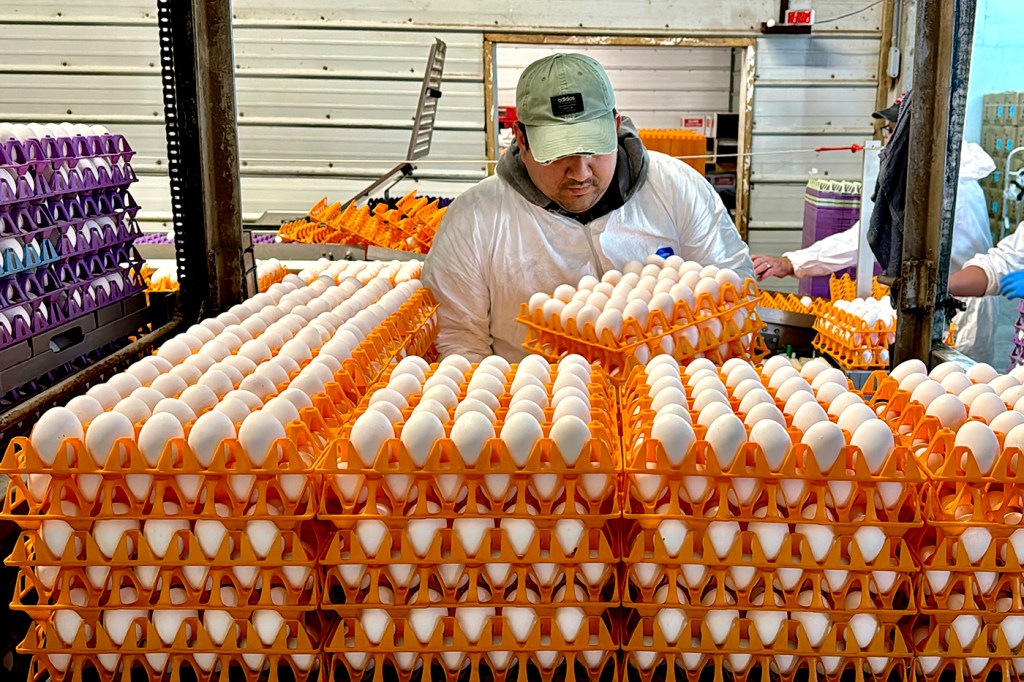What’s being done to keep avian flu out of the food supply chain?

Since the latest bout of avian flu was first detected in a commercial poultry flock two years ago, nearly 82 million chickens, ducks and turkeys have been killed to limit the spread of the virus.
That’s because whole flocks or slaughterhouse lots are killed when a single diseased bird is found, says Northeastern food policy safety expert Darin Detwiler.
Within the last few weeks, a farm in California had to euthanize its 550,000 egg-laying hens when chickens tested positive for the avian flu, as reported by the Guardian and other news sources.
Detwiler says he expects commercial flocks will remain at risk since the rising demand for poultry and the rise of industrial poultry farms create conditions conducive to the spread of avian influenza, a highly pathogenic disease.
“It created this perfect storm,” says Detwiler, an associate teaching professor of food policy. “It’s just Russian roulette with a larger bull’s eye.”

Avian flu is not new — but huge farms are
Avian flu, a specific strain of influenza adapted to birds, “is nothing new,” Detwiler says, adding that outbreaks between the 1950s and 1980s tended to be smaller and sporadic.
Times have changed, and “what we have to realize is that the poultry population has grown,” Detwiler says. “The poultry population as a consumer food really grew in the 1990s. Therefore, bird populations grew radically and operations have become larger and larger.”
He says 51 million poultry farm birds had to be “de-populated,” using the U.S. Department of Agriculture’s terminology, during the last big avian flu outbreak in 2014-15.
The latest outbreak was detected by the USDA in a commercial poultry flock on Feb. 8, 2022.
Featured Posts
Since then, the USDA says, the virus has struck 1,084 commercial and backyard flocks in 47 states and led to the euthanization of nearly 81.74 million birds, mainly egg-laying chickens, broilers, turkeys and ducks.
Inspection and slaughter
One way USDA inspectors detect avian flu in poultry birds is to examine them just before slaughter for disease symptoms, including swelling, purple discoloration, paralysis or sickness, Detwiler says.
The detection of one sick chicken results in the entire lot of chickens being slaughtered and buried or burned according to USDA regulations, Detwiler says. Chickens back on the farm where the sick one originated are also killed, he says.
“In a large lot of chickens, if any one of them is found to show the symptoms of bird flu, they depopulate the entire flock.”
“That’s pretty much the only way you can control the disease,” Detwiler says. “We’re talking about exposure, contamination, transmission of disease and control of the flock.
“It’s not like the flu is getting worse,” he says. It’s just that the size and scope of poultry farming is growing so large that bigger and bigger flocks of birds are killed when infections are detected, Detwiler says.
As farms grow, so does controversy
The Business Research Company predicts that the demand for poultry will grow 6.9% from 2023 to 2024, due in part to people’s interest in healthy protein and to rising disposable incomes.
Massive poultry farms are opening to meet rising demand, with big poultry now raising “more than a billion birds annually … in densely packed barns” in North Carolina, according to the Charlotte Observer.
The growth of massive poultry operations has resulted in complaints by neighbors, environmentalists and even poultry farmers, most of whom contract with multi-billion dollar companies including Tyson Foods and Perdue Farms, “which control almost all aspects of production,” the Observer reported.
Not a food-borne illness
Sporadic cases of avian flu have occurred among people who handle birds, although there is no evidence of human-to-human transmission, according to the Centers for Disease Control and Prevention.
The National Chicken Council says avian flu is not a food-borne illness, although people are encouraged to eat only properly cooked and handled poultry.
The USDA says, “All poultry products for public consumption are inspected for signs of disease both before and after slaughter. The ‘inspected for wholesomeness by the U.S. Department of Agriculture seal ensures the poultry is free from visible signs of disease.’”
Raw chicken is a culprit in salmonella but it could possibly pose a risk for avian flu as well, Detwiler says. He says the preemptive killing of “millions and millions” of birds shows that federal inspectors consider the risk of avian flu must be taken seriously.
Vaccines — for chickens?
Poultry farmers already are taking numerous steps to combat disease transmission, including having workers don hazmat-style suits, Detwiler says.
Poultry companies are looking at other ways to minimize the costs associated with flock eradication due to disease detection, including using hormones to grow larger chicken breasts and growing poultry cells in the lab, he says.
“I believe there’s work underway to find some kind of vaccine (for avian flu),” he says.
“Then the goal would be to vaccinate chickens so that (flock eradication) doesn’t happen at all,” Detwiler says. “As of yet, it hasn’t happened.”
In the meantime, the USDA says cooking eggs and poultry to the proper temperature, preventing cross-contamination, sanitizing cutting boards and washing hands with warm soap and water for at least 20 minutes after handling raw poultry and eggs will provide “protection against all avian influenza viruses” as well as salmonella and E. coli.











